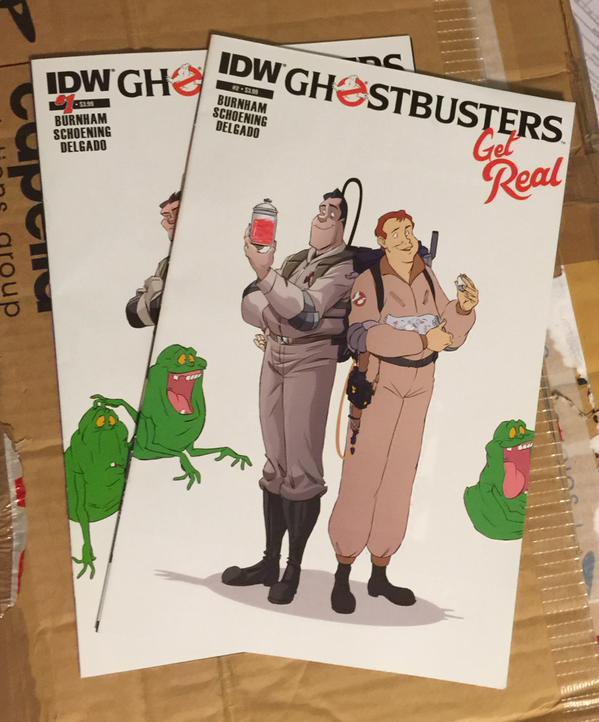Recently a friend of mine posted they had dropped in on their child’s first grade class as the guest reader for the day. He read The Circus Ship by Chris Van Dusen. He mentioned it was one of their favorites so I hopped over to some used book sites to see if we could pick one up.
Continue reading The Circus ShipTag Archives: Featured
Summer at the Museum
I was originally just going to throw some fun screen grabs from these early time machine Phineas and Ferb episodes up on the Paleo Porch facebook page and be done. While going through the episodes for the shots though I noticed there was more to say and show about the museum than just the “back-in-time-with-dinosaurs” trope.
Prehistory and Paleolithic Pop Culture

Turns out Hugh Hudson has a new film out that focuses on the discovery of the prehistoric cave paintings in Altamira. If you aren’t familiar with the discovery, the Cliff Notes version is an 8 year old girl named Maria led her father Marcelino Sanz de Sautuola to a cave which held amazing paleolithic paintings of bison among other wonders; scientific debates ensue.


The end of the 19th century was rife with debates on man’s place in nature as well as the entire story of mankind in general. The established French view was that prehistoric humans were incapable of such higher forms of thought required to create such things. Arguments about the past and the professional nature of the scientists and divided disciples were heated, marked, and many times personal. Paleoanthropology and other disciplines as we know them were in their infancies fetal stages and battle for the authority to pontificate on humanity’s past was as much the prize as finding answers to the questions they were asking.


Having done a fair amount of research on the Piltdown Affair and its context within the debates that came to a head because of find like Altamira, I am especially intrigued. Adding to that is the fact that like so many other important discoveries in this period it was made by an amateur. That is to say it was reported by an amateur since it was originally discovered by a child.
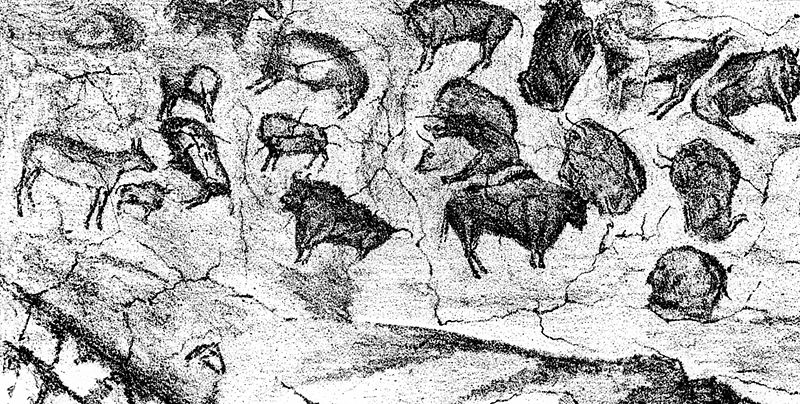
The movie itself looks wonderful since it will have the debates and forces of will involved (including the Church). It also included the wonder that fills Maria as the bison from the cave come alive in her dreams and become a part of her.

As with most things in life I didn’t get to this from any direct route. I actually first heard of this film through a trailer for its soundtrack. As bizarre as soundtrack trailers sound the bits and pieces around it are where I can glean more of the story.
Mark Knopfler and Evelyn Glennie worked together to create the score for the film and it sounds incredible. It was on Mark’s official Facebook page that I first say the trailer to the soundtrack. Complete with the reimagined stylized version of the famous bison on the front.
The bison form Altamira are iconic and you may recognize them from the plethora of Bisonte cigarette ads/packs that are everywhere. (I say everywhere, that may only be the case if you are as interested in Spain as I am). If not everywhere then at least on cigarettespedia.com which is a more useful website than you may think, especially for someone who studies visual culture.
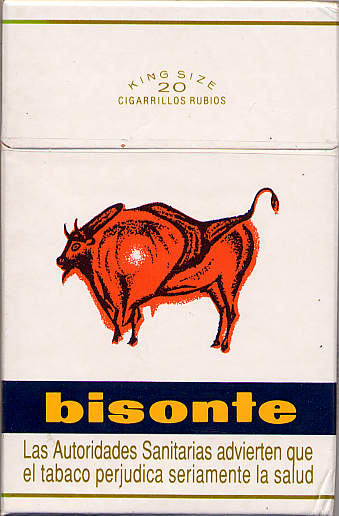
Getting to the heart of the film is difficult since all the available trailers are in Spanish since it was released there at the first of this month (April 2016). This isn’t because the film is in Spanish, but because of locality (I guess). So the trailers are dubbed into Spanish which just strikes me as odd, even if I am appreciative of the fact that was produced in English.
There are a few English clips that are part of the making of the soundtrack video below where I grabbed some of the above photos. As far as the cave itself goes, it remains closed to visitors since the damage it sustained from visitor’s breathing in the 1960s. The museum close by has a full replica included some sculptures of human faces that you couldn’t get to in the cave itself. There are also reproductions in Madrid, Germany, and most recently Japan. The Caves were up for reopening to the public a few years ago, but in an effort to preserve the site the decision was made to keep them closed. looking at a fake trope was still contentious in 2014.
The Cave was designated as a UNESCO World Heritage site in 1985 and they have a short video on it as well. Until it gets wider release this will have to suffice to piece together what is going on.
Update: Aug. 3, 2016 Full length English trailer finally hits youtube.
Glyptodos and Glyptodonts*
*Thanks and/or blame for this goes to Tom Luczycki
Hey look! A paleo entry on an supposedly paleontologically themed page! How novel.
I will start with this great coincidence from 2007 when the Society of Vertebrate Paleontology’s journal (JVP) was released not only on my birthday, but with one of my favorite extinct creatures on the cover:
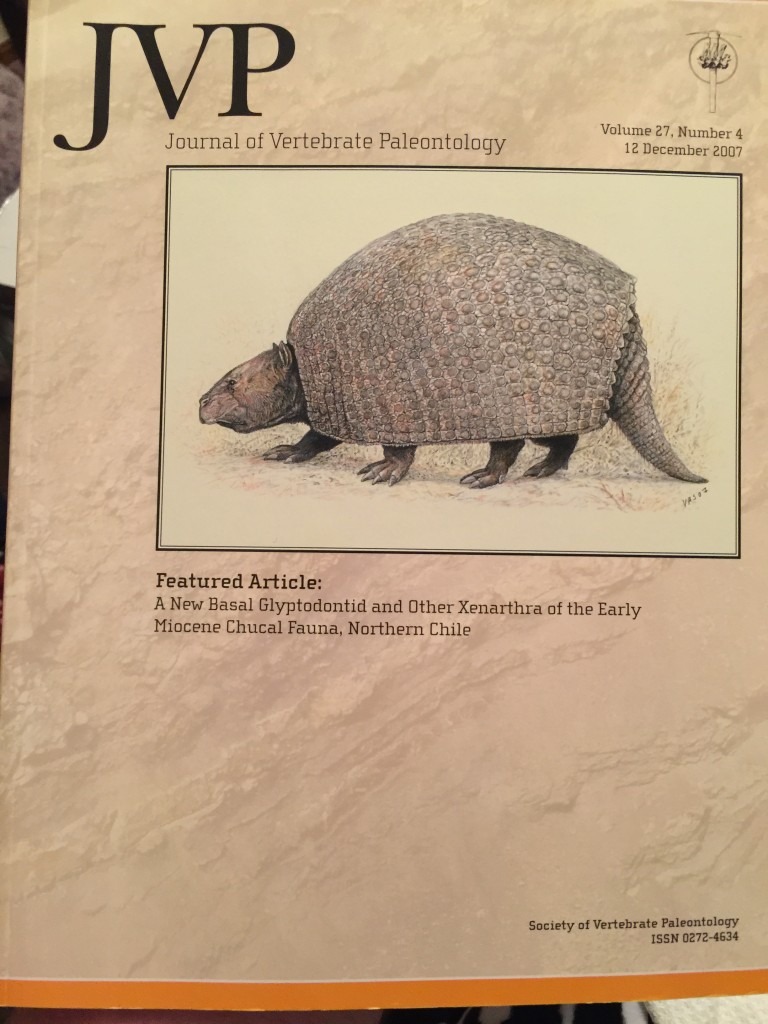
And since it is one of my favorites, the past few days’ worth of paleo news circulating in the popular press and among friends and colleagues on twitter has been a delight.
Yes, well. If you haven’t heard/read by now, they have played around with some glyptodont DNA (how cool is this?) and determined what any school kid will tell you: They are related to the stately armadillo. Actually related to “armadillos and their allies” so the end is nigh for the Ice Age Axis Powers.

Since the original press release, I have posted several different versions over on the PaleoPorch Facebook Page. Enough to constitute putting them together on here so you can be annoyed all at once instead of incremental scrolls on your timeline.

I mentioned that any school kid will tell you they are related to armadillos. I mean this in the same manner that all school kids will tell you that South America and Africa fit together–it is just obvious. Right?

![BBC.Ice.Age.Giants.1of3.Land.of.the.Sabre-Tooth.720p.HDTV.x264.AAC.MVGroup.org[09-20-28]](https://paleoporch.com/wp-content/uploads/2016/02/BBC.Ice_.Age_.Giants.1of3.Land_.of_.the_.Sabre-Tooth.720p.HDTV_.x264.AAC_.MVGroup.org09-20-28-1024x576.jpg)

This might also prove that they didn’t have “trunks.” I never really bought into this argument and it is probably my own fault of thinking about an armadillo with an elephantine proportioned proboscis, which isn’t technically what proponents of the elongated schnoz are/were pitching. Bit, DNA can’t give us shapes of soft tissue unless it is fully cloned and 100% and viable and… Welcome to Ice Age Park. (A dinosaurid aside: at one point, and I am not sure where in print, Bob Bakker was theorizing that the brachissaurus’ nostril on its head made it akin to an elephant, but Darren Naish (@Tetzoo) put that to rest way back in 2009.)
Now that there is scientific proof that Glyptodonts are related to armadillos, that means the allies range from the pink fairy armadillo, which is about the size of a toilet paper tube, to the Volkswagen beetle behemoths we’ve all come to know and love.
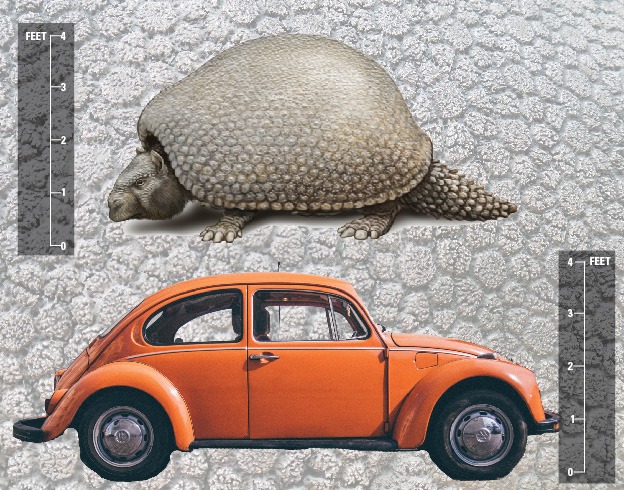
Besides, I am from Texas, and we love our armadillos, especially when they are Texas-sized. Especially when it means that the beer can be scaled up equally.

We has one of these when I was a kid. It was plush stuffed and not taxidermy stuffed and lived, so to speak, on top of our kitchen cabinets, I thought it was the neatest thing. Full disclosure: Shiner is a better beer.
I was also less than thrilled with the short shrift they got in the Ice Age cartoons too, but that is another story.

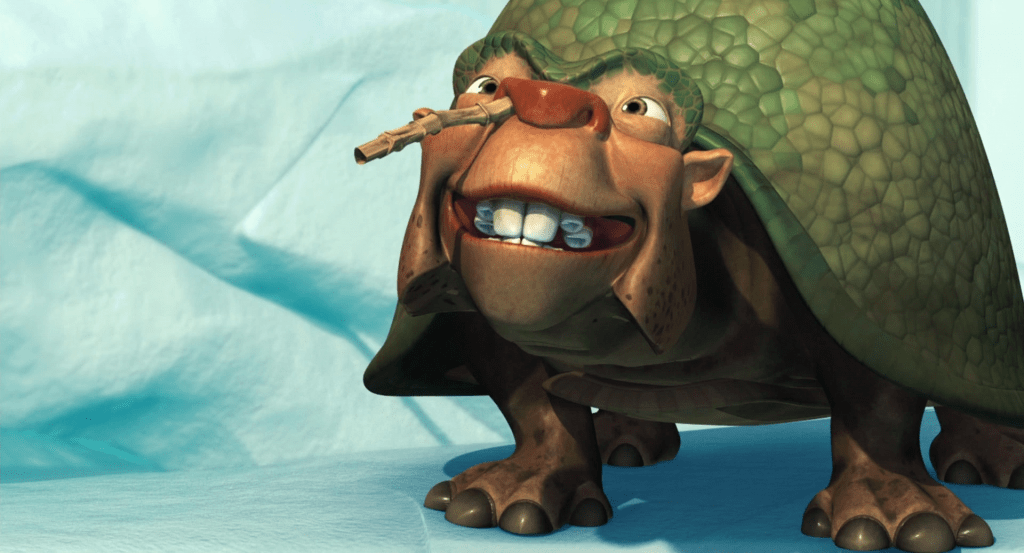
A relatively recent documentary on Ice Age Giants captures some great fossil footage of in situ and museum specimens down in Arizona. Ice Age Giants was hosted by Professor Alice Roberts (@DrAliceRoberts) and it definitely worth a watch. (part of an older post here). Here is the first episode and the Glyptodonts show up around the 22:20 mark, just after the Shasta Ground Sloths and the Grand Canyon segment.
BBC.Ice.Age.Giants.1of3.Land.of.the.Sabre… by singaporegeek
As an ending thought, the next time you are out for Mexican food or Tex-Mex, take the opportunity to order yourself a nauseous armadillo (that is a queasy dillo (quesadilla))
It All Started With a Tweet
Actually it was the reply to a tweet. The one below in fact. Suddenly, going through twitter in the morning before getting out of bed changed the trajectory of the entire summer and, in all honesty, may have helped my reconnect with a very long forgotten piece of myself. I’ve used the analogy before, but in this case I very much feel like Columbus who has discovered something that thousands of people already knew about. The Ghostbusters cartoon, that is The Real Ghostbusters, had a comic.
So it goes, that April 19th began a tireless internet search for any format of any of these comics I could find. I lived for the ghostbusters cartoon when I was a kid. I saw the series before the movie and was always a bit bummed that Egon did not look the same in the movie. If I ever had a television hero or role model as such, it was Egon. Cartoon Egon. I can’t tell you how hard I tried to get my hair to roll like that. Incidentally it was the late 80s and early 90s and I did have the rat-tail too.

Not a single person I knew was into comic books when I was a kid. To be fair I grew up mostly around adults, but still I don’t remember classmates bringing any to school or whatever. The first one I bought was an Uncanny X-men that was in the magazine section of the grocery store (Brookshire Brothers is its name), because I had been watching the animated series on Fox Kids on Saturday mornings.
I kept up with the story arc until at some point in Jr. High school, I was made to get rid of my collection of two large Nocona boot boxes full of comics, by this time X-men, Ninja Turtles, and Wolverine because they were “a fire hazard.” I gave them to the one person I knew had comics and as far as I know he still has them all to this day.
When I tried to get back into them later when I had my own place that I wasn’t concerned with pyromaniac comics burning down, I found that the single story lines I had followed had been split into seemingly limitless different arcs and I absolutely hated it. I didn’t pick up a comic again until this year.
The original run, drawn and written true to the cartoon are a thing of beauty. Not far into the run, there is Egon pointing out the debates on the warm-bloodedness of dinosaurs. That was neat enough, but when I got to the issue that had the reference to Symmes Hollow Earth theory I was hook. I am a historian of science (specifically earth and field sciences, geology, paleontology, and archaeology) so it was fascinating to see that obscure reference in a comic from 1988 aimed at kids. I now have an enlargement of that panel on my office wall.
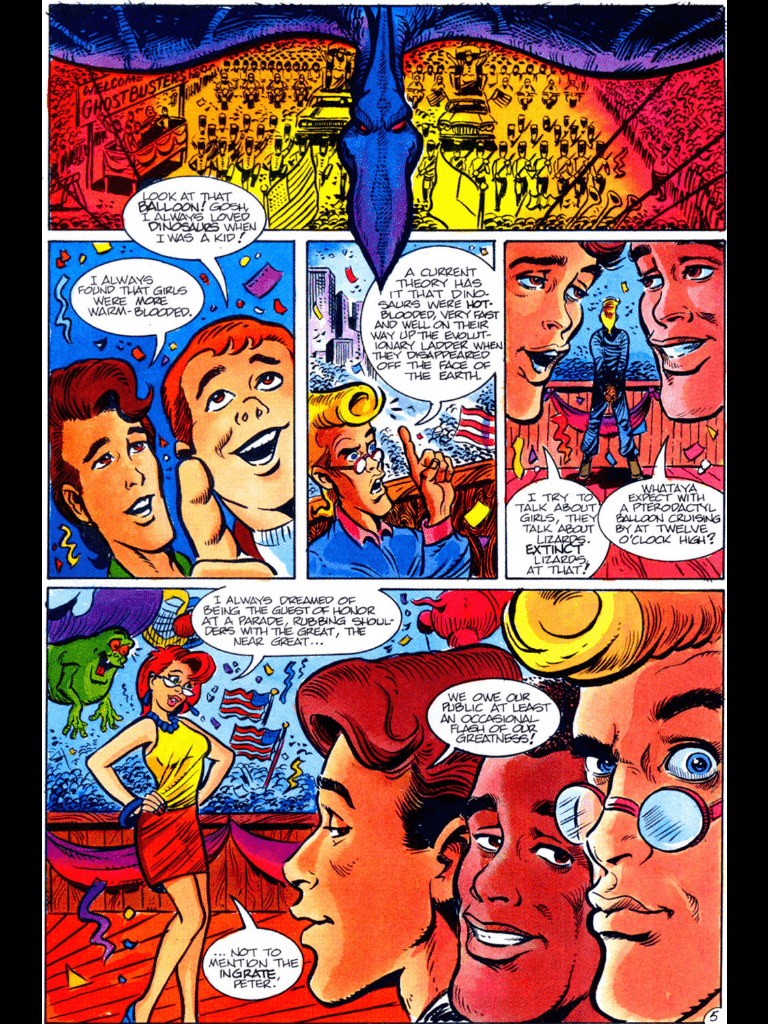
In addition for finally rounding up all the original US comics and digitizing them, I lucked on to a fellow from the UK selling the first 100+ of the UK Mag comics. I have about 15 of them digitized, but they are coming along. That aside, something interesting started showing up in the google searches for Ghostbusters comics–(and here we have the second voyage of Columbus) there were new ones.
They were new, but they weren’t new. They are brilliant. They are absolutely everything that a fan could possibly want in a 21st century rendition of the franchise. I hate to admit just how long it took me to get used to the newly drawn characters specifically because I love all the artwork and the artist Dan Schoening (@Dapperpomade) is such a great guy and a must follow on Twitter if not for interaction then for his sneak peak/previews (including some really neat post-it art).

There could be a full manual written on just the easter eggs and sly references to other incarnations of the Ghostbusters that he includes in the series. When I started reading the series (that is now more than a couple years old) the appearance of Belushi as Ray’s Dreamworld Virgil pretty much squashed any doubts I had about where this was going. The writing, masterfully executed by Erik Burnham (@Erikburnham) brings everything together in a way that make every single issue enjoyable every single time you read one.

What I think I love the most amongst all this stuff that many of you have been enjoying for years is the fact that it does the very opposite of the thing that turned me away from comics all those years ago. Instead of splitting stories into backstories and alternate universes and riding relative dimensions to some weird end, the IDW publishing series is tying in everything. That is everything. The cartoons–yes, plural, even that weird one made for teens is represented, the movies, the video games, it is all coming together and that, for me, is a nice bit of Ray Stantz cosmological symmetry.
They, along with Tom Waltz (@TomWaltz) produced the crossover to rule them all: Teenage Mutant Ninja Turtles Ghostbusters. (I don’t want to leave the colorist Luis Antonio Delgado out either, the stuff pops on the page and looks amazing on a retina display iPad, Luis doesn’t have a twitter that I am aware). God, how I wish this would have been done when I was a kid, because the very UN-esque agreement that my mother made me submit to in order to get Ninja Turtle toys was to make room for them by getting rid of my ghostbusters toys. That this even exists is a tribute to humanity’s greatness. I am telling you, t is golden record in space worthy.


Every page has comes with something like this. Which, of course, has led to backtracking to Tom Waltz recent runs with Ninja Turtles proper and it doesn’t disappoint either, but that is a thought for another time.
Currently they are running a 4 part Ghostbusters Get Real, wherein the cartoon ghobstbusters have crossed over into the new/real/comic universe. Never before have I wanted to hit up a Comic Con and get anything signed before, but this series has me looking at future locations.
The third one is out in a couple weeks and will feature Egon on the cover, so I am more than a little excited for that. The story is running true to all forms too. The best news comes that they are also working on a Ghostbusters Annual for the end of this year and a full new series (this will be Vol. 3) for 2016 along with a full published Tobin’s Spirit guide. There is really much, much more to say about just how wonderful all of this is and most especially for me as it recaptures a lot of what I was before life really got in the way. It also doesn’t hurt that I am finding it as I am working on my PhD research. A quick read through of one or two issues is a welcome break and recharge from digitizing thousands of WPA letters and funding, locality, worker records, and bureaucratic paperwork. I will, with all sincerity but these guys in my acknowledgements when the dissertation is finished.
Panorama of the Monumental Grandeur of the Mississippi Valley
The year is 1851, you make your way through the streets of Philadelphia to a small theatre where scores of other interested parties are milling around waiting to be allowed in. You deposit your 25 cents for admission (12.5 cents for any children you have in tow) and make your way inside. The din of attendees drown out any discernible conversation as everyone finds their place before the show starts. For weeks printed advertisements have been calling this something you did not want to miss. Not only will they be displaying a full moving of the Mississippi River but it will be accompanied by the eminent Dr. Dickerson’s lectures which were “by themselves worth twice the price of admission.”
 |
| Advertisement for Dickeson’s Scientific Lectures. Source. |
The lights dim and the spotlight hits the panorama and you begin your trip down the Mississippi River led by Dr. Dickeson whose stories, both scientific and anecdotal, would be accompanied by music and in some instances smoke effects to get a more authentic feel of a steam powered paddlewheel boat. These were not only the precursor to movies, but to those 4D experience rides that some museums have today. The images are not only impressive for their size, but the vividness of color and superb detail.
 |
| Scene 1 Detail |
 |
| Scene 2 Detail |
 |
| Scene 2 Detail |
 |
| Scene 3 Detail |
 |
| Scene 4 Detail |
 |
| Scene 5 Detail |
 |
| Scene 5 Detail |
 |
| Scene 5 Detail |
 |
| Scene 5 Detail |
 |
|
John J. Egan; Natchez Hill by Moonlight; Indian Encampment; Distant View of Louisiana; Indians Preparing Supper, scene ten from the Panorama of the Monumental Grandeur of the Mississippi Valley, c.1850; distemper on cotton muslin; Saint Louis Art Museum, Eliza McMillan Trust 34:1953
|
 |
| Scene 10 detail |
 |
|
John J. Egan; The Tornado of 1844; Destruction of Indian Settlements; Horrid Loss of Life, scene eleven from the Panorama of the Monumental Grandeur of the Mississippi Valley, c.1850; distemper on cotton muslin; Saint Louis Art Museum, Eliza McMillan Trust 34:1953
|
 |
|
John J. Egan; Louisiana Squatter Pursued by Wolves; Humorous Scene, scene twelve from the Panorama of the Monumental Grandeur of the Mississippi Valley, c.1850; distemper on cotton muslin; Saint Louis Art Museum, Eliza McMillan Trust 34:1953
|
 |
|
John J. Egan; Prairie with Buffalo, Elk, and Gigantic Bust on the Ledge of a Limestone Rock; Spring Creek, Texas, scene thirteen from the Panorama of the Monumental Grandeur of the Mississippi Valley, c.1850; distemper on cotton muslin; Saint Louis Art Museum, Eliza McMillan Trust 34:1953
|
 |
| Scene 13 Detail |
 |
| Scene 13 Detail |
 |
| Scene 13 Detail |
 |
|
ohn J. Egan; Fort Rosalie; Extermination of the French in 1729; Grand Battle Scene; Mode of Scalping, scene fourteen from the Panorama of the Monumental Grandeur of the Mississippi Valley, c.1850; distemper on cotton muslin; Saint Louis Art Museum, Eliza McMillan Trust 34:1953
|
This is one of the only hard breaks between scenes. Which may have been done on purpose to show the hard line between warfare and more peaceful, pastoral, and placid parts of the trip.
 |
|
John J. Egan; Chamberlain’s Gigantic Mounds and Walls; Natchez above the Hill, scene fifteen from the Panorama of the Monumental Grandeur of the Mississippi Valley, c.1850; distemper on cotton muslin; Saint Louis Art Museum, Eliza McMillan Trust 34:1953
|
 |
|
John J. Egan; Indians at Their Games, scene sixteen from the Panorama of the Monumental Grandeur of the Mississippi Valley, c.1850; distemper on cotton muslin; Saint Louis Art Museum, Eliza McMillan Trust 34:1953
|
 |
|
John J. Egan; Baluxie Shell, Mounds, scene seventeen from the Panorama of the Monumental Grandeur of the Mississippi Valley, c.1850; distemper on cotton muslin; Saint Louis Art Museum, Eliza McMillan Trust 34:1953
|
 |
|
ohn J. Egan; Ferguson Group; The Landing of Gen. Jackson, scene eighteen from the Panorama of the Monumental Grandeur of the Mississippi Valley, c.1850; distemper on cotton muslin; Saint Louis Art Museum, Eliza McMillan Trust 34:1953
|
Scene 18 is the only that is currently on display with the Navigating the West: George Caleb Bingham and the River exhibit at the Amon Carter Museum of American Art.
 |
| Scene 18 Detail |
 |
| Scene 18 Detail |
 |
| Scene 18 Detail |
 |
| Scene 18 Detail |
 |
| Scene 18 Detail |
 |
|
John J. Egan; Lake Concordia and Aboriginal Tumuli, scene nineteen from the Panorama of the Monumental Grandeur of the Mississippi Valley, c.1850; distemper on cotton muslin; Saint Louis Art Museum, Eliza McMillan Trust 34:1953
|
 |
| Scene 19 Detail |
 |
| Scene 19 Detail |
 |
|
John J. Egan; Huge Mound and the Manner of Opening Them, scene twenty from the Panorama of the Monumental Grandeur of the Mississippi Valley, c.1850; distemper on cotton muslin; Saint Louis Art Museum, Eliza McMillan Trust 34:1953
|
 |
| Scene 20 Detail |
 |
| Scene 20 Detail |
 |
| Scene 20 Detail |
 |
| Scene 20 Detail |
 |
| Scene 20 Detail |
 |
|
John J. Egan; Cado Parish Monument, scene twenty-one from the Panorama of the Monumental Grandeur of the Mississippi Valley, c.1850; distemper on cotton muslin; Saint Louis Art Museum, Eliza McMillan Trust 34:1953
|
 |
|
ohn J. Egan; De Soto’s Burial at White Cliffs, scene twenty-two from the Panorama of the Monumental Grandeur of the Mississippi Valley, c.1850; distemper on cotton muslin; Saint Louis Art Museum, Eliza McMillan Trust 34:1953
|
 |
| Scene 22 Detail |
 |
| Scene 22 Detail |
 |
|
John J. Egan; Mammoth Ravine; Exhuming of Fossil Bones, scene twenty-three from the Panorama of the Monumental Grandeur of the Mississippi Valley, c.1850; distemper on cotton muslin; Saint Louis Art Museum, Eliza McMillan Trust 34:1953
|
There were fossils! Enormous bones being excavated from the sides of a ravine running along the Mississippi River. Not only were they isolated bits and pieces, but giant skeletons, nearly complete. Rendered so well by Egan that they are obviously giant sloths. This image also ties Jefferson’s (incorrect) original description of the claws of this type of animal and the beautiful painting by Charles Wilson Peale Excavating the Mastodon. The details are breathtaking.
 |
| Scene 23 Detail |
 |
| Scene 23 Detail |
 |
| Scene 23 Detail |
 |
| Scene 23 Detail |
 |
| Scene 23 Detail |
 |
|
John J. Egan; Temple of the Sun by Sunset, scene twenty-four from the Panorama of the Monumental Grandeur of the Mississippi Valley, c.1850; distemper on cotton muslin; Saint Louis Art Museum, Eliza McMillan Trust 34:1953
|
 |
| Scene 24 Detail |
 |
| Scene 24 Detail |
 |
|
You can almost see this one saying “The End” of “Fin”
John J. Egan; Blank Scene, scene twenty-five from the Panorama of the Monumental Grandeur of the Mississippi Valley, c.1850; distemper on cotton muslin; Saint Louis Art Museum, Eliza McMillan Trust 34:1953
|
 |
| Scene 25 Detail |
 |
| Scene 25 Detail |











